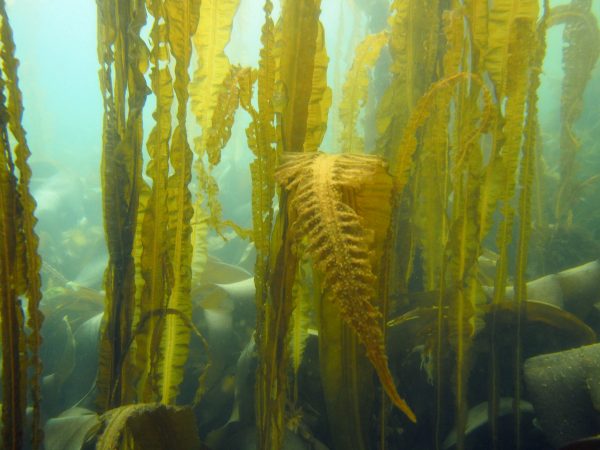Exhibit will highlight human connections to Aleutian Islands
July 11, 2017
Lauren Frisch
907-474-5350

A new traveling exhibit will teach visitors how human communities have relied on the Aleutian Islands as a source of food and protection.
"Underwater Forests of the Aleutians" will open at the Museum of the Aleutians in Unalaska on July 13, 2017. Visitors will learn about ecosystems in the coastal environments surrounding the Aleutians and how human communities depend on the resources that thrive there.
Brenda Konar, a professor at the University of Alaska Fairbanks College of Fisheries and Ocean Sciences, said the exhibit presents these prominent ecosystems as a starting point. “We also want to focus on the coastal waters that so many people rely on where kelp, sea otters and sea urchins have had a dynamic history.”
Coastal ecosystems in the Aleutians can be populated with dense kelp forests, rocky urchin barrens or a combination of the two, something scientists call transition zones. Konar said the specific makeup of the coastal ecosystem is often dependent on predation from species higher up in the food chain, such as sea otters and killer whales.
These species and ecosystems provide valuable resources for Aleutian communities. For example, kelp forests play an important role in coastal areas as a nursery for fish and invertebrates that support nationally important commercial fisheries and coastal Alaska communities. Kelp also protect shorelines from coastal erosion and are an important food source for coastal communities.
Alaska Sea Grant agent Melissa Good hopes the images and artifacts on display are a visual that will spark interest in the Aleutians and help visitors understand the diversity and complexity of nearshore ocean environments.
“The Aleutian Islands harbor this beautiful, dynamic and productive system that many people currently rely on but seldom can picture,” Good said. “This exhibit brings people into the kelp forests and tells a story about our past and present.”
The exhibit will be interactive, featuring biological samples such as otter pelts and skulls, harpoon and spear artifact replicas, and equipment that researchers use to study the region.
Konar and Good have teamed with Museum of the Aleutians director Virginia Hatfield; San Diego State University professor Matthew Edwards, who specializes in temporal and spatial patterns in coastal marine communities; and archaeologists Mike Etnier, of the University of Washington, and Dixie West, of Kansas State University. Exhibit Alaska created the design and panels.
The exhibit is expected to remain in Unalaska until October, when it will travel to St. Paul in the Pribilof Islands. From there, the exhibit may travel to more Aleutian communities and then others around the state.
“We are excited that the exhibit will start at the Museum of the Aleutians, because these kelp forest ecosystems that the exhibit talks about are right in our visitors’ backyards,” Konar said. “But we also want to make sure people around the state have the chance to learn about this important ecosystem.”


